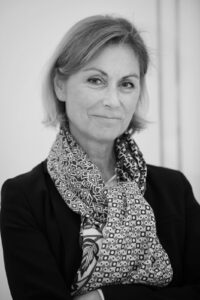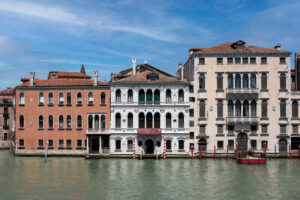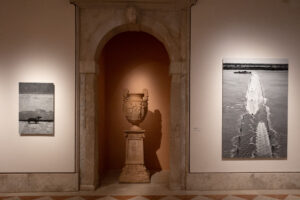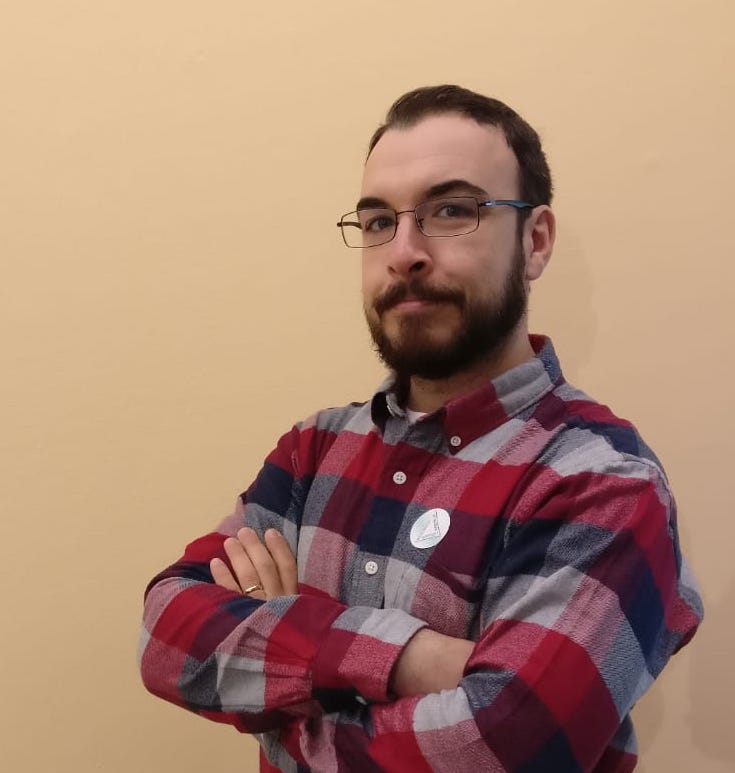Fondazione dell’Albero d’Oro dates back to 2019. The goal was to restore life and soul to Palazzo Vendramin Grimani, formerly known as Palazzo Grimani Marcello, one of the most beautiful buildings overlooking the Grand Canal. The Foundation’s mission is to promote all artistic, cultural and educational actions for the benefit of the city of Venice, its history and its international reputation in collaboration with prestigious Italian and international public and private institutions. To learn more about this project, we had the pleasure of interviewing the director Béatrice de Reyniès.

Béatrice de Reyniès, direttrice della Fondazione dell’Albero d’Oro
Francesco Liggieri: I would like to make people understand who Béatrice de Reyniès is without summarizing it, I would like her to describe herself with the title of an artwork.
Béatrice de Reyniès: Quattro Impromptus op. 90 by Schubert.
What can a museum or an art foundation do for the growth of the country?
A non-profit cultural foundation aims to stand out for its mission which is to promote artistic, cultural and pedagogical actions in favor of the city and the history of Venice, contributing to its international reputation by collaborating with numerous public and private institutions, both Italian and international. If the Foundation succeeds in promoting the expansion and transmission of cultural and artistic values and in encouraging young people to pursue artistic careers through the various activities and programs offered, it will make an active contribution to the development of the country.

Palazzo Vendramin Grimani © Ugo Carmeni, courtesy Fondazione dell’Albero d’Oro
How has the pandemic affected your work?
Palazzo Vendramin Grimani opened its doors to the public during the pandemic: the opening took place under special conditions, with small groups of visitors.
How important is the educational mission for Fondazione dell’Albero d’Oro?
For each important exhibition, we try to produce a visit booklet for children and, more recently, to organize special visits dedicated to families. In the future, we will try to make our exhibitions accessible to younger visitors, through mediation solutions within their reach.

Bosco Sodi a Palazzo Vendramin Grimani, sala dell’Aurora © Andrea Avezzù, courtesy Fondazione dell’Albero d’Oro
Can you tell us how the exhibition choices are born?
The Board of Directors of the Foundation meets regularly to discuss the choice of exhibition themes proposed by me and by its members. The themes vary according to the Biennials and the opportunities to meet and discover artists and current issues.
Should the public be trained or entertained within an art exhibition?
In an art exhibition, our ambition is to arouse interest in the works presented and in the artist, who in some cases worked in residence. The way the works are presented is perhaps the key to shaping the way we look at art, and for this the scenography and lighting are very important. Art can touch us, question us or move us, but it cannot entertain us. When it gives happiness, a certain serenity and enlightenment, when it allow the imagination to develop or feed the imagination, it seems to me that we have fulfilled our role as transmitters.

Nicolo Manucci, Il Marco Polo dell’India, Palazzo Vendramin Grimani © Andrea Avezzù, courtesy Fondazione dell’Albero d’Oro
When and how important is the cultural planner within the organization chart of a foundation or museum?
We don’t have a cultural planner in our organizational chart: we design event programs in teams, with people from different backgrounds, in order to have a multifaceted and multidisciplinary offer.
What advice would you give to a young artist who wants to grow up in the art world?
Let him/her follow his/her inner voice.

Nikos Aliagas, Regards Venitiens © Nikos Aliagas, courtesy Fondazione dell’Albero d’Oro
In Italy, in exhibitions, there is a shortage of works by young artists. Do you think it’s a cultural, social or simply courage issue?
It is important to give space to young artists, who should exhibit and present their works alongside those of established artists. This is the main role of state museums. All other private institutions should be free to make their own choices in line with their mission. We must give credit to the numerous foundations that have the courage and the vocation to present the work of young artists
Is there a place that you identify as the beginning of your journey and your work, in your memory?
Yes, my drawing and sculpture lessons and the pleasure of working in the atelier in an atmosphere of creation.
If you weren’t the director of Fondazione dell’Albero d’Oro, what would you like to do?
I would have liked to be a conductor, but if I weren’t the director of Fondazione dell’Albero d’Oro I could create and develop another open, multicultural and lively artistic place…
Info:
www.fondazionealberodoro.org/it

Independent artist and curator. Founder of No Title Gallery in 2011. I observe, study, ask questions, take informations and live in contemporary art, a real stimulus for my research.






NO COMMENT